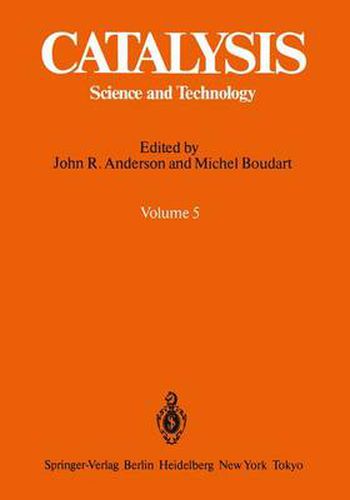Readings Newsletter
Become a Readings Member to make your shopping experience even easier.
Sign in or sign up for free!
You’re not far away from qualifying for FREE standard shipping within Australia
You’ve qualified for FREE standard shipping within Australia
The cart is loading…






This title is printed to order. This book may have been self-published. If so, we cannot guarantee the quality of the content. In the main most books will have gone through the editing process however some may not. We therefore suggest that you be aware of this before ordering this book. If in doubt check either the author or publisher’s details as we are unable to accept any returns unless they are faulty. Please contact us if you have any questions.
Catalytic steam reforming has grown during the last two or three decades into one of the world’s great catalytic processes. It is of major economic significance since the products from it form the feed for a number of other major processes. Nevertheless, catalytic steam reforming is a relatively difficult technology. It operates at high temperatures where problems of the maintenance of materials integrity and of catalyst stability and activity are severe, the establishment of high thermal efficiency of the plant is economically vital, and reactor operation is strongly influenced by mass and heat transport effects. The process is the subject of a thorough review by Dr. J. R. Rostrup-Nielsen who discusses both the basic cataly tic chemistry and the way in which this is interrelated with reactor and plant design. The use of catalytic converters for the purification of automotive exhaust gases is a relatively new technology which was brought into existence by social pressures for the preservation of acceptable environmental conditions. The majority of catalytic practitioners have been able to watch the growth of this technology from its inception to its current state of sophistication. Automotive catalytic converter technology is now in a mature state, and the chapter in this volume by Dr. K. C. Taylor provides a review which covers both the process chemistry and the most important converter design factors.
$9.00 standard shipping within Australia
FREE standard shipping within Australia for orders over $100.00
Express & International shipping calculated at checkout
This title is printed to order. This book may have been self-published. If so, we cannot guarantee the quality of the content. In the main most books will have gone through the editing process however some may not. We therefore suggest that you be aware of this before ordering this book. If in doubt check either the author or publisher’s details as we are unable to accept any returns unless they are faulty. Please contact us if you have any questions.
Catalytic steam reforming has grown during the last two or three decades into one of the world’s great catalytic processes. It is of major economic significance since the products from it form the feed for a number of other major processes. Nevertheless, catalytic steam reforming is a relatively difficult technology. It operates at high temperatures where problems of the maintenance of materials integrity and of catalyst stability and activity are severe, the establishment of high thermal efficiency of the plant is economically vital, and reactor operation is strongly influenced by mass and heat transport effects. The process is the subject of a thorough review by Dr. J. R. Rostrup-Nielsen who discusses both the basic cataly tic chemistry and the way in which this is interrelated with reactor and plant design. The use of catalytic converters for the purification of automotive exhaust gases is a relatively new technology which was brought into existence by social pressures for the preservation of acceptable environmental conditions. The majority of catalytic practitioners have been able to watch the growth of this technology from its inception to its current state of sophistication. Automotive catalytic converter technology is now in a mature state, and the chapter in this volume by Dr. K. C. Taylor provides a review which covers both the process chemistry and the most important converter design factors.